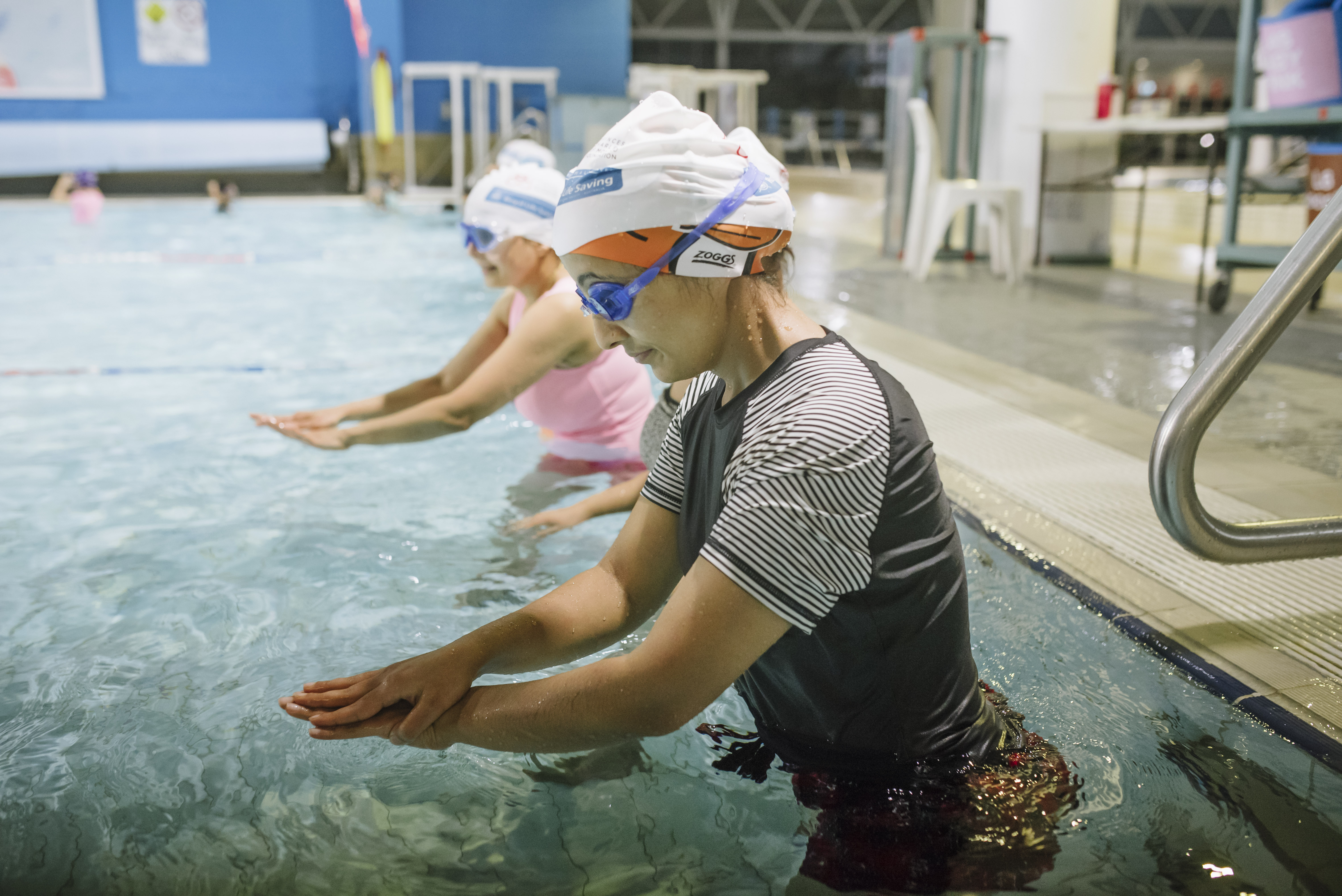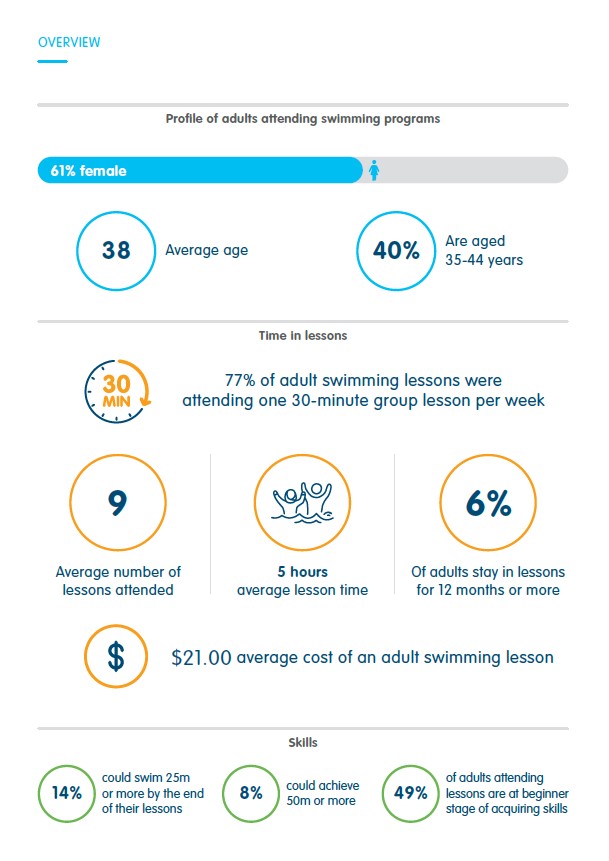Published 5 May 2022

Adult learn to swim classes are an important means of reducing the drowning rates in Australia, but little is known about who attends them and how much they learn.
New research released this week by Royal Life Saving Society – Australia aimed to shed light on who attends adult swimming programs, how long they are in lessons and how much they are spending on classes. It also highlights the types of adult swimming and water safety programs offered and charts the improvement in swimming and water safety skills.
This study identified that a variety of swimming programs are available around Australia for adults, including public swimming lessons, subsidised lessons, and fully funded programs, with most adults in swimming classes attending just nine lessons on average – approximately five hours in the water.
The Australian Water Safety Strategy 2030 identifies swimming and water safety skills as a key factor for reducing drowning among all age groups, however this study found that most adults taking swim lessons are only acquiring basic skills in the water.
Regardless of the type of program they were attending, and how long they had been attending lessons for, the study found that most adults were unable to swim more than 25 metres upon completion of their program. Just eight per cent could reach the National Benchmarks set for 12-year-olds at the end of their program.
Royal Life Saving Research Manager Stacey Pidgeon said that while many swim schools offer swimming programs for adults, this study highlights more could be done to align adult swimming and water safety programs with the National Swimming and Water Safety Framework. This would ensure that adults develop a range of swimming and water safety skills, just as children do in their lessons.
The study also found that 60 per cent of adults in swimming lessons are female, despite males being over represented in drowning statistics.
“It’s fantastic to see that adults are taking the plunge and learning to swim. However, we need to better understand the needs of men, who are more at risk of drowning yet are less likely to take up adult swimming classes”, Ms Pidgeon said.
“There is an opportunity to enhance existing programs or develop new programs that better meet the needs of adult swimmers, especially men.
“That includes options to encourage ongoing participation beyond an initial program so people can build on the fundamental skills and develop key swimming and water safety skills to enable them and their families to be safer around water.
“Our research found that adult swimmers were more likely to come from higher socio-economic backgrounds, so we need to look at ways to reduce the cost barriers and consider other factors that may influence adults to enrol and attend swimming lessons.”
Previous research conducted by Royal Life Saving has reported that adults may face multiple barriers in attending swimming programs beyond just the cost of lessons, including a fear of water, access to childcare, available times of programs and cultural appropriateness of programs.
Subsidised programs may encourage ongoing participation, such as the Royal Life Saving Western Australia model, where 29 per cent of participants continued after their initial eight-week program.
This research has been used to inform the development of Royal Life Saving’s new adult Swim and Survive curriculum which will be rolled out later this year.
“This research highlights that while there are some great adult learn to swim programs across Australia, we can do more collectively to improve access to these swimming and water safety classes to ensure that everyone has the skills to enjoy the water safely and help reduce the risk of drowning across the community,” Ms Pidgeon said
Notes:
Data for this research was obtained from a range of swim schools across Australia (local government, non-profit and commercial swim schools) and included funded, subsidised and private swimming and water safety programs for adults. We thank them for their support and involvement in this study.
This research does have some limitations and is not representative of all adults participating in programs nationwide. This study replicated the same methods used by Royal Life Saving in previous research assessing the swimming and water safety skills of children in commercial (private) swimming and water safety programs.

To view the full report click here
For more information on adult learn to swim programs click here
